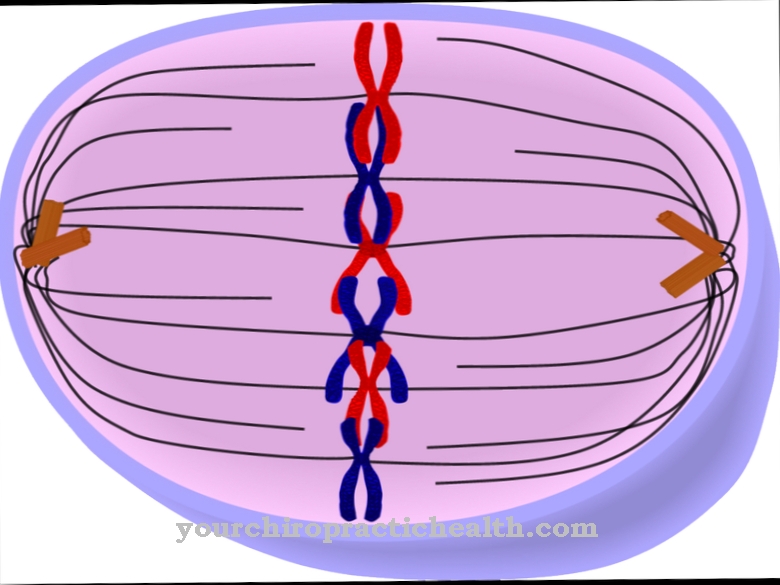Man's eyes are constantly in motion. The eyeballs turn consciously or unconsciously in different directions and perceive different objects arbitrarily or involuntarily. This is done by the absorption of all visual stimuli by both eyes, which make three-dimensional vision possible as a functional unit. A distinction is made between vergence movements and conjugated eye movements. The former are changes in the angle of both instantaneous axes, the latter are changes in the direction of both eyes.
Saccades again, the quick movements of the eyes are used to capture a new target before it is fixed. Since the saccade cannot be changed at will, it can also just miss the target and must be corrected, which takes place as a reflex.At this point, no information gets into the nervous system, so the eyes are blind in this very short period of time.
What are saccades?

Human eye movement takes place under three aspects, which are also helpful for the medical assessment of diseases and disorders. A distinction is made here in saccades, fixations and regressions, and in the movement pattern itself again in saccades, eye tracking movements and a combination of both changes in the direction of gaze, which is called "nystagmus".
The saccade is understood as the sudden and rapid gaze movement of the eyes that takes place between fixations. The human eye focuses spontaneously on objects without perceiving them directly. With this jerky eye alignment on the object or event, no information is recorded.
Medicine also calls this movement Scan jumpbecause the perception is limited at this point. Rather, the object is simply located and eye contact is established. This happens z. B. when reading letters or when fixing points during a train ride.
Function & task
Saccades are a short, visual process that occurs prior to fixation, through which information is then picked up and processed. The movement of the eyes as a pattern is caused by two messages that come from the balance organ and take place as a visual message about the retinal image shift. The organ of equilibrium responds to rapid changes in the position of the head with its sensors for linear and rotational acceleration. The organ of equilibrium triggers eye movements within 10 milliseconds via short brain stem reflexes, which always lead to an image movement in the direct field of vision. Such movements cause slow follow-up movements of both eyeballs, which, as soon as they reach their mechanical limits, are interrupted by jerky, rapid return movements.
The actual stimulus is not a consequence of a proper movement, but results from movements in the outside world, e.g. B. a departing car that is perceived through the window of a stationary car and triggers the feeling that your own train is in motion. The wrong assessment is known as the "illusion of movement".
Since the resolving power only takes place directly in the field of vision, in the center of the yellow spot (fovea centallis), this must be aligned with the stationary object. This is called fixation. The alternation of the fixed target and the individual fixation moments takes place through saccades.
In addition to these jerky, fast movements, there is also the slow eye movement, whereby saccades and eye movement are two forms of targeted eye movement that complement each other in this form, but still run on different bases. With regard to the fovea, saccades move object images from the retina and its outer shell into the fovea, while the fovea rather follows up through slow eye tracking as soon as an object moves. Both the saccades and the eye following movements are supported by the head movement.
Moving objects are initially perceived by saccades, then fixed by slow or smooth eye movements and held more precisely in the field of vision and in the fovea. If the outer object moves too quickly, catch-up saccades are started that bring the image back into focus again and again. The duration of the saccade is shorter than the reaction time based on saccades.
The visual response in the central nervous system is also outside the saccade. This in turn shows that during a saccade there is no visual perception or information absorption. Rather, it is a kind of intermediate process that can nonetheless be changed by information. However, the information does not represent visual signals, but rather internally generated signals that approach a certain eye position. While the eye detects an object and the signal is compared with the target alignment, the saccade continues until both are coordinated and therefore identical. If the eye misses the moving target, a correction saccade takes place, which pushes the image back into the area of the fovea.
You can find your medication here
➔ Medicines for eye infectionsIllnesses & ailments
Saccades are medically checked by the doctor holding both hands in front of the patient's eyes from a distance of one meter and asking them to look at and fixate both hands alternately. The speed of the eyeballs and the accuracy of the fixation are checked. Also how quickly the target is captured. If both eyes are healthy, the target is recognized immediately and the saccade does not have to correct anything, or at most to a very minor extent. If, on the other hand, there is a pathological disorder, it can be a hypometric or hypermetric saccade.
In the hypometric saccade, eye movement is slowed. From this it can be concluded that there may be a neurodegenerative disease, i.e. direct damage to the nervous system, which, for B. dementia, Alzheimer's or Parkinson's is the case. In these clinical pictures, the patient's eyes lose the ability to perform quick saccades. A hypermetric saccade is present when the correction saccades occur significantly more frequently than usual. Usually this occurs when the cerebellum is damaged.













.jpg)

.jpg)
.jpg)











.jpg)